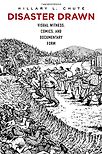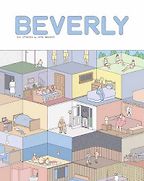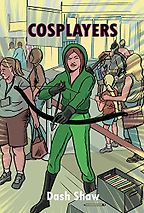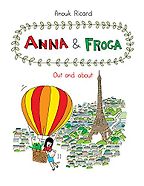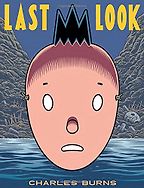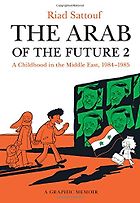For the benefit of the uninitiated: what is a comic and how does it differ from a graphic novel or narrative?
The way I look at it is that ‘comics’ is a medium, the way film is a medium, or painting is a medium. Syntactically, I know that sounds weird. ‘Comics is’ isn’t a phrase that rolls off the tongue, but it is one that was established by a cartoonist named Scott McCloud. He did a book called Understanding Comics, a book about comics theory, presented in comics form, which came out in the early nineties.
His view—and also my view—is that we don’t want to disavow the connection that this form has with turn-of-the-century—1890s and early 1900s—mass media. In the US and in England, comics were appearing in mass-market newspapers and other cheap, printed ephemera. That’s where comics got their name: from the funny pages or the funny papers, which were inserts in sensational newspapers published by the likes of William Randolph Hearst and Joseph Pulitzer.
“Part of what is interesting about the renewed attention that comics and graphic narratives are getting right now is that figures like Si Lewen, classics of the genre, are being resurrected for a new, appreciative audience.”
A lot of cartoonists today care about that history of comics as a democratic form for any potential reader. That’s why people still like the term ‘comics’ — even though it can seem awkward to use when you’re dealing with a book where the subject matter is not funny at all.
So comics is the medium. A graphic novel is one format of comics. I like to call them ‘graphic narratives’ because a lot of the work that I study is non-fiction. A comic book is another format of comics, and a comic strip is another format of comics.
Comics has had all of these different formats, which have been variously popular at different times in the past century or so. It started off with comic strips in newspapers, and then, in the late 1930s, there was the ascension of comic books as a format. Graphic novels have all these really fascinating antecedents—illuminated manuscripts, illustrated 19th century fiction, for example—but the graphic novel proper didn’t exist until the 1970s.
Would web comics be another format?
Absolutely. It’s a relatively new—and I think incredibly powerful and interesting—format of comics. There’s a lot of debate about what makes comics comics. I find that pretty tiresome because it can get really pedantic. Some people have been wedded to the idea that a real work of comics is printed. In part, that’s part of the populist power of comics. A triptych in a museum might be sequential visual art, but it is not comics because it’s not reproduced and it is not reproducible. Comics has always been interested in being reproducible.
I know you’ve worked with at least one grand master of the graphic novel genre on a particularly interesting project. Can you tell us about it?
I’ve done a lot of collaborations with cartoonists. I worked with Art Spiegelman for six years on a book called MetaMaus, which is about his book Maus. That book is one long interview between the two of us that we recorded for two years. It was so much fun. I would go over to his studio, we would talk and talk for hours and hours, I would interview him, we would get it professionally transcribed, and then I edited it to be 250 pages worth of text. The book features our interview, but it also has family documents, sketchbook entries, outtakes, a lot of visual material.
I have also worked with the cartoonist Alison Bechdel, who’s probably most famous for her book Fun Home, which came out in 2006. She and I were the first professor-cartoonist teaching team to teach a college and graduate-level course together. It was a course at the University of Chicago about comics and autobiography. We also did a comics piece together, a series of gag scripts about Roland Barthes – I actually got a credit, although I didn’t draw a single mark.
Get the weekly Five Books newsletter
There’s also a new project that I worked on with Art Spiegelman that just came out this year, Parade by Si Lewen. Abrams has put it out as this beautiful accordion book. Part of why I’m so interested in comics and graphic narrative is because I feel that, as a form, it continues to draw attention to the book as object in a way that has started to feel different for novels. They don’t necessarily inhabit themselves as material objects the way that graphic novels do. This accordion book, that you can read on both sides, is something that couldn’t be reformatted for the internet, for example. You couldn’t make a digital edition.
Si Lewen was an incredible artist who did these wordless, sequential, graphic narratives from the 1950s onward. He was a Jewish refugee who came to the US right before World War II — and then fought for the United States in the military, going back to Eastern Europe as a soldier. He had this incredible background that informed Parade, which is a very dark book about the horrors of wars, and the impulse to war and violence. When it came out in the 50s, Einstein wrote him a letter saying, “Our time needs you and your work.”
“Part of what people tend not to realise about comics—unless they’ve thought about it—is just how labour-intensive a form it is. A work like Maus took 13 years.”
I’m thrilled that this has been reissued in a beautiful edition. Art and I went to conduct an interview him, at his nursing home, in 2015, and that’s part of the book. He was a very important figure, and then he became disillusioned with the art world and dropped off the map. He stopped showing his work in galleries and stopped exhibiting. He took himself out of the circuit. Part of what is interesting about the renewed attention that comics and graphic narratives are getting right now is that figures like Si Lewen, classics of the genre, are being resurrected for a new, appreciative audience.
Yes, people talk about the decline of print, but there has been this amazing proliferation of graphic novels and comics. How did you decide the best of 2016 from such a teeming array of choices? What are your selection criteria?
There are a few things. One is that this list represents a mix of people, some who are established and some who are new. Nick Drnaso is a young cartoonist who’s based in Chicago, a fresh young talent. He came out of nowhere, which is very rare. That’s really exciting. Part of what people tend not to realise about comics—unless they’ve thought about it—is just how labour-intensive a form it is. A work like Maus took 13 years. This work, Beverly, took about 4 years for Nick Drnaso to complete.
I think there’s a lot of interest in comics now and a lot of publishers are signing up a lot of comics works, but, in the rush to put work out, sometimes works get published without the requisite care and attention. So I’m always interested in comics that have been germinating for a while.
Charles Burns is on the list: Charles Burns has been working on this project that has now been published as Last Look for years and years and years — maybe the greater part of a decade. One is always waiting for works from established cartoonists like Charles Burns because any book he publishes means a huge event.
Let’s talk about Beverly first. You pick up this book to find a depiction of suburban life in slightly bleached, pastel off-colours, almost like a caricature of American suburbia. As is often the case in fiction, you find the neat and tidy façade hides some messy social and emotional undercurrents.
You can’t know how dark this book is until you start reading it. I met Drnaso in Chicago. He was a student of my friend Ivan Brunetti, who’s a fabulous cartoonist, and does a lot of really amazing New Yorker covers, and a friend of my friend Chris Ware, who’s also a famous cartoonist.
Five Books interviews are expensive to produce. If you're enjoying this interview, please support us by donating a small amount.
One of the things that he captures so incredibly in this book is that it’s not just a ‘slice of life’ look at suburbia. There are a lot of comics like that, capturing the texture of everyday life. Chris Ware is the master of that form. This book is about really dark things, from the very first, fascinating and incredible story about race to the story that feels really relevant right now, about a teenage girl who fakes an abduction and says that she’s been abducted by an Arab man. The community starts producing this anti-Arab sentiment. There’s the story about a child named Tyler, who has a form of OCD. He has these unwanted thoughts so that everywhere he looks, he sees people being killed and dismembered. I actually found that hard to look at.
Likewise. In spite of the seemingly innocuous aesthetic, the subject matter is deeply disturbing in places.
Deeply disturbing. And that tension—between the surface of a page, what it looks like, what certain colours make the reader feel—and the content is something that comics excels at. This book, Beverly, really excels at it. Part of what is so interesting is its style and the bleak pastel colours. Nick Drnaso worked very hard to create this style.
There was an interesting interview with him in the Comics Journal when this book came out. He said that he wanted to tear things down to their essence in the way he draws people and places, which I think he is very good at. The faces of his characters are very simple. They have these weird, blocky, abstractly husky, Midwestern bodies.
Oversimplified, but drawn with great economy of line. The lines carry so much emotional and psychological information.
He also talked about wanting to make the work very still, very bleak and frozen. Part of the effect of that for readers is that we do the animation ourselves. We’re filling in a lot of information when we’re reading. Then, in a story, like the one with the child who keeps seeing bodies around him, we don’t know if this is something he is revelling in and takes pleasure from, or if this is something that he experiences as very horrible. That is part of the tension created by the story.
In comics, you can present a character’s interior psychic landscape. That’s an incredible narrative thing to be able to do — and to toggle back and forth between the third person narration and the first person visualisation.
The other thing that these narratives lend themselves to is terrific acrobatics with plot. Here you’ve got six stories that relate to each other. In the comic book genre—superheroes and the like—you’ve always got a parallel universe with ‘what if’ scenarios being played out. You’ve got spinoffs or cameo appearances as characters come on to the stage and then disappear into their own subsidiary plots…
… or storylines or universes.
So you can read each of these stories as standalone. But, taken together, the effect is powerful and more than a little unsettling.
Very unsettling. It’s a devastating book. I actually find this book really hard to read. The characters walk on and walk off. Then we find information about them parcelled out, across the entire narrative, in really powerful ways.
I think this dovetails with another selection of yours, by Dash Shaw, Cosplayers.
I love this book.
Let’s start, first of all, by defining what a cosplayer is, because not all of our readers will necessarily be familiar with the term.
Cosplay is a portmanteau word combining costume and play or player. For someone who has never encountered or seen it, ‘cosplay’ means people dressing up as various characters. It’s an incredible show of creativity from the ground. Some people buy costumes, but a lot of people spend hours and hours and hours creating costumes themselves. It’s a form that is open to anybody. When I was at Comic-Con, there were people dressed up as all sorts of different things. It was three days where people could just let their freak flags fly in a space of total permission.
I’ll always remember being in a café, right near the convention centre, and seeing a man walk in in a full metal suit of armour, including a face grate, opening the visor, and ordering a latte — and the barista not even batting an eyelash. There’s something really moving, to me, about this creation of a certain kind of popular culture that anybody can access.
There’s a real DIY element to the whole thing.
Yes, there are hundreds of DIY cosplay websites. There are some books coming out. It’s about people extending information to be better able to express themselves freely. There’s something very moving about it.
There’s also a whole lot of stuff going on with cosplay and gender. There’s a form of cosplay called ‘crossplay.’ This doesn’t come up so much in Dash Shaw’s book. All it means is people dressing up in costumes to deliberately play with gender norms. For example, at the San Diego Comic-Con this past summer, there were several male-Princess-Leia-as-slave cosplayers. There was a whole group of female Wookiees from Star Wars in pastel colours, wearing go-go boots.
One of the things I really appreciated in this book was the way that cosplay is a prism to reflect and, in a way, distort popular cultural elements. We’ve got the two protagonists, two young women cosplayers, who use social media and film to broadcast a message to the world that questions who we are, the personalities we create and we inhabit. In the age of the selfie and YouTube this takes on a very interesting dimension.
Part of what I love about this book, aside from the fact that it is a moving narrative about two young female cosplayers—everything comics tends to be gendered male still, and here is a nice story of female friendship—is that it’s about media in a fascinating way. It’s about different forms of communication. They are making films and uploading them, so it is about film, it is about the internet, it is about photography, and it is about the printed medium of comic books.
There’s this dramatic scene, at the end, when they look at comics in a comic book store.
It becomes, also, about the self as a medium. You show up to a convention and you are the medium. You put on this costume and you become someone else. I feel this book is really savvy. It’s not pro-digital or anti-digital, but it shows the ways that different forms produce different versions of self. It’s about people creating their own media as opposed to being sold a life by somebody else.
And all of this is in a colour palette and style very reminiscent of classic superhero books in the 50s. It’s almost like holding up a mirror to lovers of the genre.
Yes, I love that about it. Cosplayers actually came out as physical comic books before it came out as a book, so Dash Shaw was really going for that angle.
Let’s move to another story with a strong female protagonist, Anna and Froga: Out and About.
One of the things I love about Anouk Ricard, the French artist who does Anna and Froga, is that she’s also an exhibiting painter. She’s worked in a bunch of different media, and the style that she has in her paintings is pretty much like the style she has in this book, which is for children but is a completely compelling, charming, serious story for adults too. Or, to put it another way, in terms of contemporary children’s books, it is the one that I most enjoy reading to actual children. I actively enjoy it.
She has a pared down style and a certain kind of sophistication and lightness that mixes together in the story, about a group of friends who are not quite children and not quite adults.
And not quite animals.
One of them is a human, then there’s a frog, a worm, a dog, and a cat. They are in the so-called ‘funny animal’ genre of comics, which means that they act like humans even if they have animal faces.
There’s an openness and a porousness to her drawings and also to her dialogue that is just incredibly appealing for kids, and it is incredibly appealing for me, as an adult.
There are also these very clean storyboards, which make it very accessible.
There’s not a lot of play with panels the way there is in other sophisticated comics works. She has used these clean frames, six or so frames a page, but each episode is punctuated by really gorgeous splash pages in which she paints a scene that loosely connects to the story, but is not exactly part of the story. The book has a visual layering that’s very appealing.
I love how she inverts the idea of the splash panel—the conventional language of a typical comic—in which the opening panel encapsulates the story in this visually virtuoso way, to draw the reader in. Instead, she leaves that to the end as a kind of epilogue. So she is playing with comics conventions in an artistic way.
These goofy, slightly surreal characters are terrifically endearing.
One of my favourite characters is the worm named Christopher. Some of these stories have jokes about the fact that Christopher has no arms because he is a worm. In the first story, which is about them making Christmas presents, one of the characters says, ‘I’m making an ashtray for Christopher,’ and Anna, the main character, says, ‘For Christopher? He doesn’t smoke.’ The idea of a smoking worm is hilarious, and they make him a scarf instead. This is what I mean, dialogue that’s not quite kid stuff, and not quite adult. They do adult things, but in an innocent universe of picnics and vacations and neighbours and that type of thing.
This is the fifth Anna and Froga book from Drawn & Quarterly, which is arguably the best publisher of independent comics today. They did something really brilliant by translating this book. I hope that there will be more because it really caught on in audiences of all ages.
It’s interesting that you chose two books that were originally published in France, a country with a terrifically rich visual narrative or comics tradition of the bandes dessinées. Let’s talk a bit about The Arab of the Future by Riad Sattouf, which is another story of childhood, a child’s eye view of a dangerous and sometimes disorienting adult world. This was a number one bestseller in France.
Yes, this series has been a cultural and a publishing phenomenon in France, and I think now it is starting to be in the US, too. This is The Arab of the Future 2. The Arab of the Future [1] came out last year in English translation. In the US, every major literary mainstream publication was publishing reviews or think pieces about The Arab of the Future.
It’s similar in some ways—and radically different in others—to Persepolis by Marjane Satrapi. Both are a view of conflict in the Middle East. Persepolis is about the Iran-Iraq war, the Islamic Revolution, and a right-wing, Islamic viewpoint, which The Arab of the Future also deals with, in part. Both have a child at the centre of the story. The child anchors the narrative, and we see events unfolding in a chronological, linear way from the point of view of the child. That was something that Persepolis established as a really compelling form. The Arab of the Future has echoes of that.
In this particular book, the protagonist is six, so the book starts off with him as a young boy. Like Persepolis, it also mixes the heavy view of world political-historical conflicts with a charming, accessible and quite light-hearted retrospective narration. There’s a focus on the child but then a retrospective narration that gives us an adult point of view at the same time, which is very effective.
Another thing that is very effective about The Arab of the Future is the colour palette, which is very friendly — mostly pink and black, with a little bit of red and green coming in. The surface of the book is very accessible, whereas the content is often very difficult, like children being brutally beaten at school, for example, or an honour killing which forms a big part of its plot. Flipping through pages which are mostly pink and drawn with a certain kind of lightness and exaggeration, you wouldn’t expect something as serious as a murder.
Agreed.
There are other translations planned, and the latest editions in the series are already available in France. It is an ongoing serial book project.
The story is given even greater resonance by the fact that Riad Sattouf was the only cartoonist of Arab descent on the staff of Charlie Hebdo — and for over 15 years. He had actually just stepped down from his position at Charlie Hebdo—for reasons unrelated to the content of the magazine—before the shooting in January 2015. As someone closely aligned with Charlie Hebdo, he did a piece for their first issue after the massacre. People have been very curious about his point of view as a Frenchman and as a Syrian. He actually had a very moving quote in a profile of him in the Guardian in which he said, ‘I’m not French. I’m not Syrian. I’m a cartoonist.’
Which gives it terrific resonance. That brings us to your final selection, Charles Burns’s Last Look. You mentioned, at the outset, that this is actually a compilation, something of an epic trilogy that has been written over many years. And what a long, strange trip it is.
Charles Burns, in my view, is a real master of the creepy. He is a lovely person, one of the nicest people I’ve ever met in my life, but, in his comics, it’s hard to be as creepy as Charles is.
Part of what is interesting about Last Look and really attracts me to it are the cultural references. You mentioned the really strong French comics tradition which is also referred to as the Franco-Belgian comics tradition, with works like Astérix and Tintin being globally famous. Charles Burns created this trilogy specifically to the physical dimensions of the Franco-Belgian album format. He did that on purpose to pay homage to the Franco-Belgian tradition that produced Tintin. This book is a kind of skewed take on the Tintin adventure story. A cat named Inky is like the dog named Snowy.
With the protagonist looking like Tintin gone off the rails.
So punk subculture is also a big thread of the book. He has this Tintin-like mask that he wants to wear when he performs his avant-garde performances inspired by William Burroughs. This book is just an incredible mashup of different cultural references. There are tons of Tintin references, to specific panels from Tintin. There are references to Burroughs, and Burroughs as a figurehead for punk culture and to cut-up culture in general. Romance comics are also a big theme of this book, as is art school.
I love how these characters name-drop. They are talking about people like Louise Bourgeois, they’re creating art projects in the style of their favourite artists. So we get a density of references here, distilled in a really fascinating, very personal way.
You’ve talked about the book as object. Certain editions of Last Look also come with a mask. You can impersonate or cosplay as the protagonist in the story. It is also probably worth mentioning that Burns was awarded an Eisner Award, which I think you could describe as the Nobel of the comics world. Would that be fair?
Yes, maybe the Oscar of the comics world. I actually went to the Eisner Awards this past summer. It was so much fun. It takes place in San Diego, the Friday night of the Comic-Con weekend.
It’s worth noting that there are very few people in comics who have the virtuosity of line that Charles does. His execution and this very particular style that he has, with the thickness in black line, really sets his work apart from most other cartoonists. He is technically an incredible master of the form. You can see this in the way he uses shading, all the heavy black lines that go into it.
What is interesting about this work as opposed to Black Hole—which was his other big graphic novel project—is that this is in colour. He’s working in colour for the first time in a long time, in addition to his amazing black, heavily inked pages.
You’re referring to that thick, fifties-style black line, which is very pronounced on the page.
It is very hard to describe Charles’s style. There’s something that codes ‘retro’ about it, but it’s like retro plus, because if you go back and look at the fifties comics, then that’s what Charles does, but to excess. He combines genres like the horror comics and the romance comics with the contemporary novel. There is a story in Last Look in which one cares about characters in a way that one doesn’t really care about the pulp characters in fifties comic books.
In terms of how it looks, he amplifies the style that we see in genre comics and makes it his own. It is slightly icier in his work than it is even in the 1950s comics. It looks even more artificial. It is like he’s ratcheted it up a notch. He is not so much borrowing from it, he’s recreated it.
Five Books aims to keep its book recommendations and interviews up to date. If you are the interviewee and would like to update your choice of books (or even just what you say about them) please email us at [email protected]

